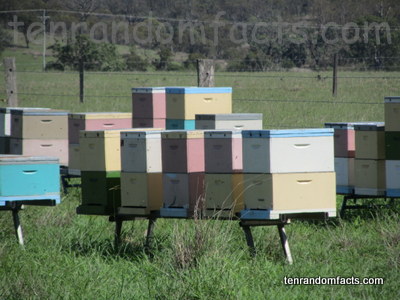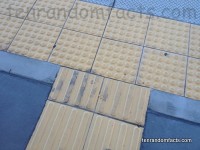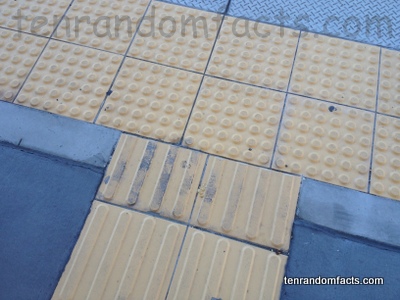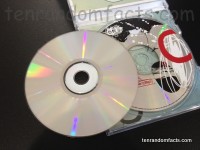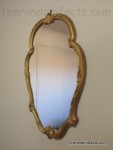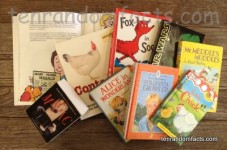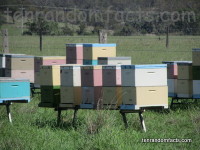
Beehives house busy bees.
- Artificial beehives are an invention used for raising and managing honey bees, that use the hive as a shelter.
- Cells, shaped as hexagons, form honeycomb that can be found in a beehive, and this is used by bees to store pollen and honey, and care for the young.
- Beehives are typically used to attract bees so that they can produce honey for commercial or domestic purposes; to attract them for plant pollination purposes; to support bees in areas where habitat destruction has occurred; or to attract bees for the production of bee products.
- Ancient Egyptians are said to have raised bees in constructed hives, from as early as 2400 BC, and archaeological evidence of hives used in large-scale beekeeping, has been found in Israel’s Jordan Valley, in the Middle East, that dates back to the 9th and 10th centuries.
- Traditionally, humans used natural materials to create beehives, like mud, tree hollows, clay and straw, while the latter was often used to make basket-like skeps, although many of these hives were used once only, due to the difficulty of accessing the honey, which often resulted in significant disturbance or death of bees, and/or honeycomb destruction during the harvesting process.
- Many ideas for more practical beehives surfaced around the 1700s, although it was not until the 1850s that American clergyman Lorenzo Langstroth, also an apiarist and noted for his significant contribution to the beekeeping industry, invented the now famous beehive that had movable frames; a design on which most modern hives are based upon.
- If a beehive is to be approached, smoke is usually puffed into the hive to disguise the emissions of chemicals that bees release to alert danger, thus keeping the bees calm.
- Modern beehives are generally reused for many years, and often feature removable frames, that contain and protect the honeycomb, and are easily removed for inspection and for harvesting honey.
- Before the use of modern beehives, corridors were sometimes built within hives to direct the queen bee’s egg laying habits and discourage her from using the honey harvesting areas.
- A new form of beehive, known as the ‘Flow Hive’, enables the user to extract honey direct from the hive without removing the especially designed frames, and it was released to the public in early 2015 via a crowd-funding initiative with huge success, raising $12 million dollars during its initial release, and is set to be popular among backyard beekeepers, due to its convenient honey harvesting method.
Bibliography:
American Beekeeping History, n.d, John’s Beekeeping Notebook, http://outdoorplace.org/beekeeping/history1.htm
Beehives, 2015, Wikipedia, http://en.wikipedia.org/wiki/Beehive




